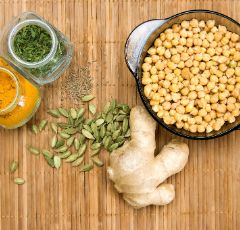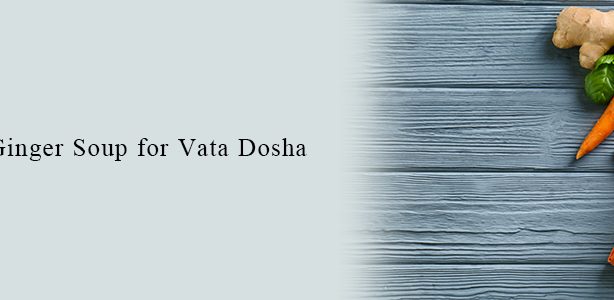Ayurveda is a holistic healing science. According to Ayurveda, food is medicine and the right diet can help prevent a number of ailments and keep the body healthy. Since the body dosha is the most important aspect to take into consideration in an ayurvedic diet, it is important to have your body analyzed.
 All bodies have pitta, vata and kapha doshas in varying levels. However, most people have a predominant body dosha which helps with planning a diet. In addition to this, sickness or health issues can also contribute to what kind of food is best consumed. Though it may sound complicated, cooking ayurvedic food adhering to the principles of Ayurveda is pretty simple. Below are a few cooking tips to venture into the realm of ayurvedic cooking.
All bodies have pitta, vata and kapha doshas in varying levels. However, most people have a predominant body dosha which helps with planning a diet. In addition to this, sickness or health issues can also contribute to what kind of food is best consumed. Though it may sound complicated, cooking ayurvedic food adhering to the principles of Ayurveda is pretty simple. Below are a few cooking tips to venture into the realm of ayurvedic cooking.
- Ayurveda recommends meals to have all six tastes: sweet, salty, sour, bitter, astringent and pungent. This constitutes a holistic meal.
- Depending on the dosha type, the volume of foods of any particular taste can be varied to achieve dosha balance in the body.
- Ayurvedic staples include: ghee, coconut oil; spices such as turmeric, cumin, fennel, cardamom, cinnamon; herbs like coriander, basil.
- Always ensure food is neither overcooked or undercooked. Ayurveda does not recommend consumption of raw vegetables. They must be boiled well or cooked as a curry or side dish. Similarly, they must not be cooked to the point where all minerals and vitamins are lost.
- Kitchari is a staple in most ayurvedic diets. This soothing food is also an important aspect of panchakarma treatment. Simply made with lentils, rice and sometimes vegetables and ghee, it is a warm and healthy dish for any day.
- Ghee can be used rather than a vegetable oil to sauté vegetables.
- Cook food just before it is to be eaten as much as possible. Freshly cooked food is digested better by the body.
- Avoid deep frying or charring any of the foodstuff as this can destroy the nutrient content.
- During the winter season, food can be cooked in coconut oil instead of ghee.
- Study the diets which can best accommodate the 3 dosha imbalances and cook accordingly.
- Basmati rice is an important grain to have when you are planning an ayurvedic diet.
Always consult an ayurvedic doctor for the best way to integrate an ayurvedic diet according to your lifestyle and body type.



